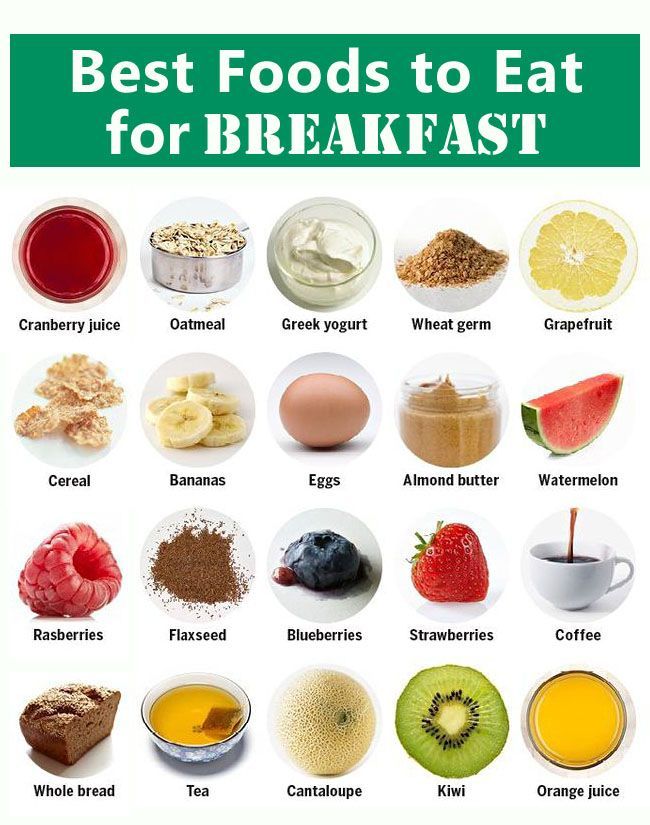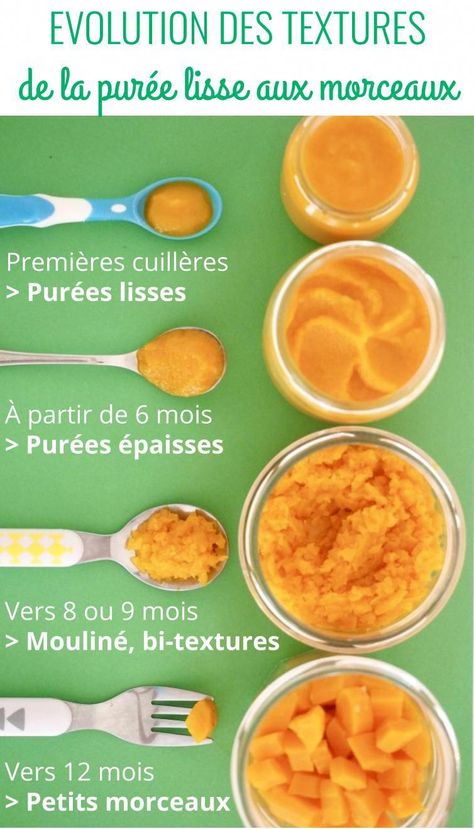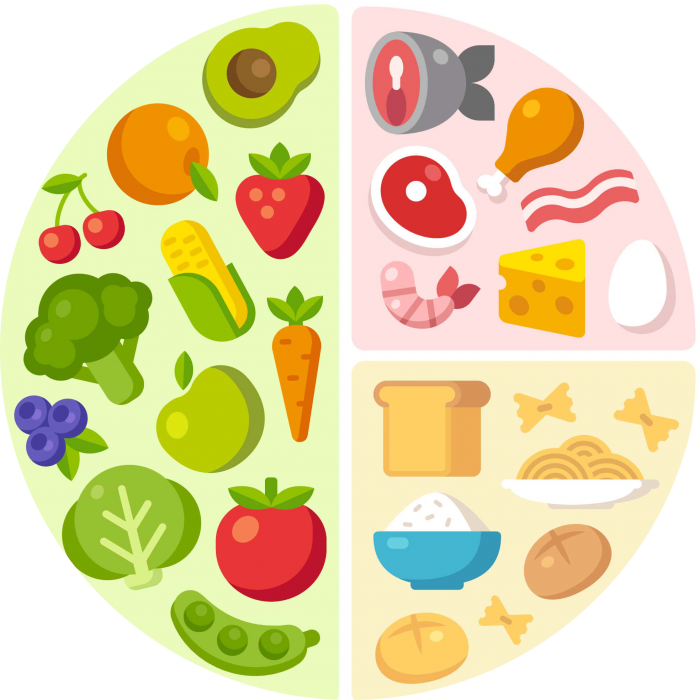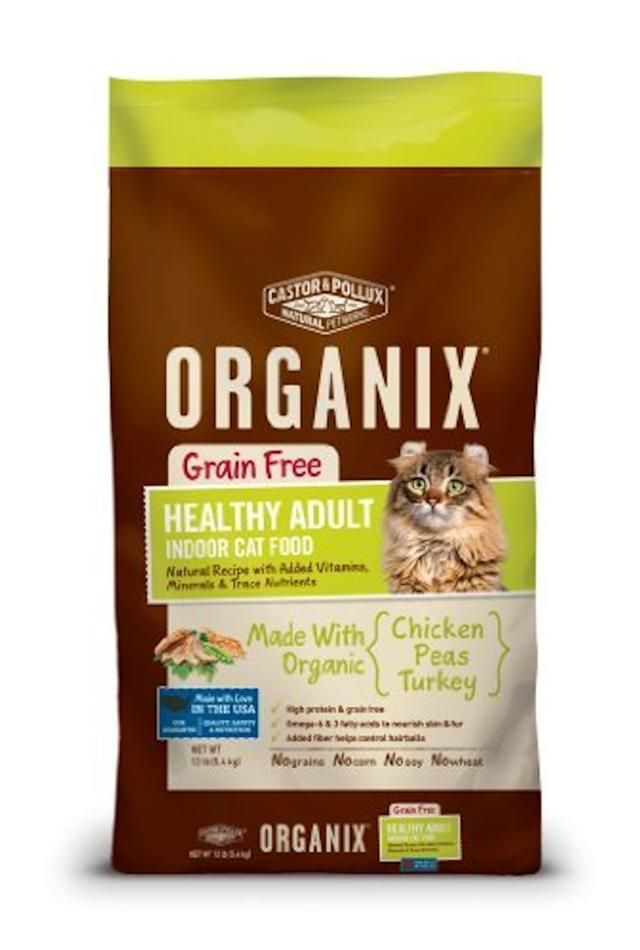What do baby sparrows eat for food
What is a Baby Sparrow's Diet?
By Betty Lewisi David De Lossy/Photodisc/Getty Images
The house sparrow is the most common of North America's 35 sparrow species. Generally, he eats a lot of grains and seeds, but will enjoy the protein of insects during the summer. A baby sparrow's diet depends on what mom and dad feed it; where they live affects the menu options.
Wild Child
A baby sparrow eats whatever his parents give him to eat, which means he's eating the same things they are. The house sparrow is opportunistic in his dining, eating whatever's available. Commercial birdseed and discarded food will work, as do various grasses, ragweed and seeds he comes across. He'll indulge in insects in the summer, such as caterpillars and grasshoppers. Other sparrows, such as field sparrows, forage for seeds and insects on the ground. Mom and dad regurgitate their food finds to feed to their nestlings.
Orphaned Baby?
If you come across a baby sparrow in your yard, pause a moment before deciding he's in distress. A fledgling, which is a baby bird with his feathers, may be on the ground because he's learning to fly. If the baby doesn't have feathers, you can return him to his nest -- despite the myth, his parents won't abandon him because of human touch. If there's no nest, or you determine the baby sparrow needs your assistance, a proper diet is important to putting him on the path to independence.
Home Cooking
Baby birds grow quickly and require protein to grow properly. Mom and dad take care of their nestlings' protein requirements with insects, but you can use cat food to meet the baby sparrow's protein needs. Soak one cup of cat food in enough water to make it mushy and add 1/4 cup of applesauce, one chopped hard-boiled egg, a crushed calcium carbonate tablet and avian vitamins, dosed according to the package. Mix everything together with enough water to give the mixture the consistency of cooked oatmeal. Freezing the mixture in ice cube trays gives you a fresh inventory of food on hand, so you can thaw only what you need. Chopsticks or plastic forceps make good feeding utensils.
Chopsticks or plastic forceps make good feeding utensils.
How Much How Often
A baby sparrow should gain weight daily to get ready to fly. If his eyes are closed and he's featherless, he'll need fed every 15 to 20 minutes, dawn to dusk. When he starts growing feathers and his eyes are open, feeding can occur every 30 to 45 minutes during the same time. As he grows, the time between feedings and the amount you feed can increase. When he's hopping out of the nest, he can be fed once an hour; by the time he's confident outside the nest, every two or three hours is sufficient. Try leaving food by his bowl when he's about a month old, though he won't be weaned for another few weeks. If he continually refuses to eat, call a vet or wildlife rehabilitation center.
To Do, and Not to Do
Avoid pasta and bread products, which are empty calories and won't help him grow, as well as dairy products because baby birds don't handle lactose well. If he's well hydrated, the inside of his mouth will look moist; if he's dehydrated, his skin may look reddish. Don't give him drops of water in his mouth because he can inhale them and drown. Instead, use Gatorade as a hydrating fluid, dipping your fingers in it and placing drops on his beak.
Don't give him drops of water in his mouth because he can inhale them and drown. Instead, use Gatorade as a hydrating fluid, dipping your fingers in it and placing drops on his beak.
References
- 2ndChance.info: Caring for Orphan Wild Baby Birds
- StarlingTalk.com: Baby Starling & Sparrow Care
- Cornell Lab of Ornithology: All About Birds: House Sparrow
- WildlifeHotline.com: Raising Baby Sparrows & Starlings
- U.S. Fish and Wildlife Service: Field Sparrow Habitat Model
Photo Credits
What Do Baby Sparrows Eat?
As an Amazon Associate I earn from qualifying purchases.
A Newly Born Baby Sparrow in its NestThe most numerous of North America’s 35 sparrow species is the house sparrow. It consumes a variety of grains and seeds, but during the summer, it will appreciate the protein in insects. The diet of a newborn sparrow is determined by what its mother and father feed it; where they reside has an impact on the available options.
If you’ve decided to pet a baby sparrow or found one that’s been orphaned by its parents, you may ask the question: what do baby sparrows eat? It only takes a little to raise a baby sparrow. A variety of foods can be offered to a baby sparrow, including cooked egg and dog or cat food. Baby sparrows may consume anything at any time. It is not difficult to care for a baby sparrow.
What Do Baby Sparrows Eat?Sparrows, like many other songbirds, are omnivorous and can therefore eat both animals and plants. These largely vegetarian birds forage for food on the ground. This does not imply that they don’t utilize feeders. The list of sparrows’ regular diet is as follows:
Grains GrainsSoybeans, white millet, rice, red millet, oats, wheat, barley, cracked corn, white proso milo, sorghum, and other grains are among their preferred foods. They prefer eating medium-sized cracked corn because of its tiny beaks. These grains can be given to your garden sparrows at home.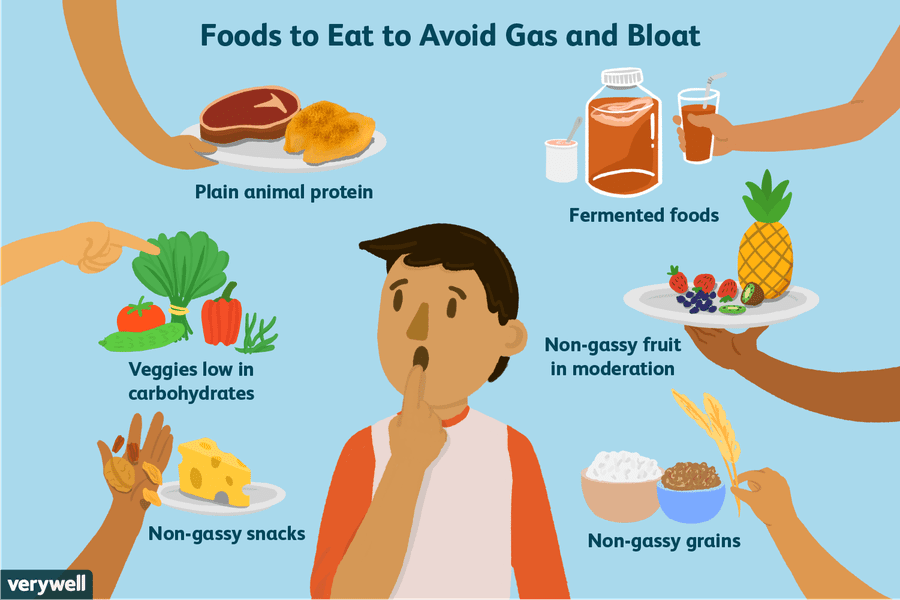
Many plant and grass seeds are eaten by sparrows, which may be found in your yard or the garden. Striped sunflower seeds, black oil sunflower seeds, shelled safflower seeds, canary seeds, hard-shelled seeds, and nyjer seeds are just a few of the seed types that they consume.
Nuts NutsA wide range of nuts is a favorite food for sparrows, including peanuts, beechnuts, almonds, hickory nuts, Brazil nuts, and much more. These foods are high in protein and oil and are good for sparrows’ health. Unshelled nuts might be hazardous since they have tiny beaks.
Fruits Fruits Can Be Given To Baby SparrowsWhen fed as supplementary food, baby sparrows feed on fruit by pecking. When migrating in the fall, they usually consume a wide range of fruits. Many gardeners are unhappy with the many holes that various species of sparrows have made in their fruits. Apples, pears, grapes, cherries, plums, loquats, peaches, watermelon, and bananas are just a few of the fruits sparrows may consume. Make sure to chop fruits before feeding garden sparrows so that they may eat them. Sparrows can’t finish entire fruits on their own because of the small size of their mouths and stomachs.
Make sure to chop fruits before feeding garden sparrows so that they may eat them. Sparrows can’t finish entire fruits on their own because of the small size of their mouths and stomachs.
Strawberries, blueberries, blackberries, baneberries, buffalo berries, bearberries, chokeberries, salmonberries, elderberries, raspberries, and other common fruits are all part of the baby sparrow’s occasional diet.
We recommend planting numerous fruit-bearing trees in your yard if you want to offer berry-eating sparrows a variety of berries. Chopped fruits in feeders are a must since sparrows use their tiny beaks to consume their snacks.
Vegetables Vegetables Can Be Given To Baby SparrowsVegetables are eaten by birds in a similar way to how humans do. Sparrows consume a variety of veggies, including potatoes, lentils, peas, tomatoes, and lettuce. In general, they avoid consuming these items. When their food supply is low, sparrows eat vegetables to survive.
When their food supply is low, sparrows eat vegetables to survive.
Make sure you chop your veggies into tiny pieces for your sparrows to swallow easily if you offer them some food from your kitchen. To allow a wide range of sparrows access to the water, place a bowl of water in your yard.
Insects Insects Are Eaten By Baby SparrowsSparrows consume a wide range of tiny invertebrates, including caterpillars, bees, aphids, and ants, particularly during the spring and early summer. They eat these creatures primarily to feed their young. When the youngsters leave the nest, they return to eating grains and seeds.
Plants PlantsBaby sparrows are mostly interested in the seeds of numerous trees and grasses, although they will occasionally consume leaves and grass. Sparrows must consume vegetation in the wild to survive if they don’t discover enough seeds to satiate their hunger.
Plants sparrows eat include ragweed, buckwheat, crabgrass, and a variety of buds and blooms. If you want to encourage them to consume plants, these plants should be accessible in your yard. Aside from that, insecticide applications in the grass are not recommended.
If you want to encourage them to consume plants, these plants should be accessible in your yard. Aside from that, insecticide applications in the grass are not recommended.
Sparrows may consume a variety of human foods, such as bread crumbs and fried chips. If you’re willing to offer sparrows some bread crumbs, make sure they’re wet for a while before putting them in the water. The dried breadcrumbs are indigestible to sparrows.
Nestlings will not consume bread crumbs even after they have been soaked in water. The food will not be able to fit into their tiny stomachs. Adult sparrows should never receive old bread crumbs since their stomachs could become upset.
ScrapsMany varieties of sparrows eat food that has been tossed aside by people. They may be discovered around leftovers in the kitchen or dining room. Scavenging for meals, they may be found in garbage cans or dumpsters.
Keep your kitchen waste uncovered to allow a wide range of sparrows to consume from it. This has several advantages, as we all know that birds are excellent natural pest controllers. Sparrows will keep your environment clean by consuming the scraps, as we all know.
This has several advantages, as we all know that birds are excellent natural pest controllers. Sparrows will keep your environment clean by consuming the scraps, as we all know.
A baby sparrow, on the other hand, only eats whatever his parents feed him. This means he’s eating the same things as his family does. The house sparrow is a flexible eater who will eat anything that is accessible. In the winter, he’ll fill his belly with acorns and other nuts. In the summer, he’ll eat caterpillars and grasshoppers. Other sparrows forage on the ground in search of seeds and insects during the summer, such as field sparrows. The parents regurgitate their meal discoveries to feed their young.b
How To Feed Baby Sparrows? Baby Sparrows in Their NestsYou may learn how to care for a newborn Sparrow if you’ve discovered one. However, observe the area carefully before taking action to ensure that the bird is an orphan. Hand-reared birds have a poor survival rate, so their best chance of survival is in the nest under parental monitoring.
Hand-reared birds have a poor survival rate, so their best chance of survival is in the nest under parental monitoring.
Start by feeding the baby bird with a wet mixture of puppy or cat food. Before combining it with the food, add a baby bird formula or Pronutro to the water. Puppy or cat canned food has a greater protein content and is closer to the natural diet than adult dog canned food. In a mixing glass, combine the food. If the bird is too young to feed itself, break off tiny bits and tweeze feed it with your finger.
Step 2Add as many insects as you can to the cat or dog food. A natural diet for a baby sparrow consists of dry foods such as seeds and seeds, as well as live invertebrates including spiders, aphids, snails, caterpillars, and other small invertebrates. Young birds prefer feeding their young with live food rather than dried-up items.
Do not give captive baby sparrows earthworms. It’s harmful to birds to have earthworms because they contain something poisonous. Instead, try providing the tiniest crickets. You might also consider offering whole insects, such as those sold for reptiles like bearded dragons, as a food option. For supplies, check your local pet shop.
Instead, try providing the tiniest crickets. You might also consider offering whole insects, such as those sold for reptiles like bearded dragons, as a food option. For supplies, check your local pet shop.
Another alternative is to sell clean white maggots, which can be found in fishing shops. Once again, the maggot should only be fed when its stomach is devoid of food. Because the black line in a maggot’s belly indicates where he has eaten, wait until this line disappears before feeding the baby bird.
Step 3Combine live foods with a vitamin and mineral supplement to ensure that your pet gets all of the essential nutrients. Supplements such as Nutrobal or Cricket Diet Calcium Paste, which are available from pet retailers, can help guarantee balanced nutrition if the live food is insufficient.
Step 4Repot the sparrow every few weeks. Feed the bird on a regular basis. Place food on tweezers straight into the sparrow’s open beak, or in a shallow dish if it is old enough. It takes around two weeks for a newborn sparrow to develop robust enough to feed himself.
It takes around two weeks for a newborn sparrow to develop robust enough to feed himself.
If the bird is tiny and has few feathers, feed it every half hour. Feed the animal if it’s older. When hungry, the bird will chirp and yawn, and when full, it will cease eating.
Step 5Offer the bird some water in a budgie sipper bottle, but only after it has accepted the drink. Young birds are poor drinkers from a short container. This is likely to result in water intoxication.
Step 6When you’re feeding the bird as it gets bigger, change the food you give it. Continue to feed the wet dog or cat food when the baby is young, but add a variety of different foods for the bird to select from as it grows older. When a young bird is strong enough to feed itself, it no longer needs a wild bird seed feeder. Place the seed in a shallow dish so that the bird may begin feeding as soon as possible.
What Are The Natural Predators of Baby Sparrows?House sparrows are relatively safe from predators since they prefer to nest in and around human dwellings. Crows, jays, grackles, and certain tiny raptor species may eat house sparrow eggs, hatchlings, and adults. House sparrows are attacked by gray and red squirrels. However, domestic cats are the main predators of adult house sparrows.
Crows, jays, grackles, and certain tiny raptor species may eat house sparrow eggs, hatchlings, and adults. House sparrows are attacked by gray and red squirrels. However, domestic cats are the main predators of adult house sparrows.
The House Sparrow is a dangerous, invasive species that may be found almost everywhere on the planet. Their aggressiveness toward other birds, propensity to form defensive flocks, capacity to reproduce rapidly, appetite for a variety of foods, and nesting close to humans have aided them in spreading across almost all of Earth’s continental regions. According to certain data, house sparrow populations appear to be declining, but it is anticipated that they will continue to be a common and abundant species throughout their current territories.
House sparrows are hunted and fed upon by a variety of owls and hawks. Cooper’s hawks, snowy owls, merlins, eastern screech owls, and many other species are among them. Cats, raccoons, domestic dogs, and many other animals are predators of nesting youngsters or eggs. House sparrows avoid being spotted and eaten by foraging in groups of two to ten individuals, which offers a lot of eyes to keep an eye out for predators.
House sparrows avoid being spotted and eaten by foraging in groups of two to ten individuals, which offers a lot of eyes to keep an eye out for predators.
To keep birds safe, keep cats indoors as much as possible. If your cat goes outside, attach a bell strap to them as a warning to avians or try not to let them out during the morning peak feeding time. If they bring home a bird, do not praise the cat or give them treats since this will be regarded as an indication that they should make you happy again. Do not offer food to strays that hang around in your yard and eat birds.
When dogs are allowed outside, keep an eye on them to guard against any potential bird harm. If your dog brings you a bird, don’t give him a pat on the back.
Keep feeders at least 10-12 feet from shrubs and natural cover to prevent birds from colliding with windows. Also, keep bird feeders at least 10-12 feet away from bushes or other natural coverage.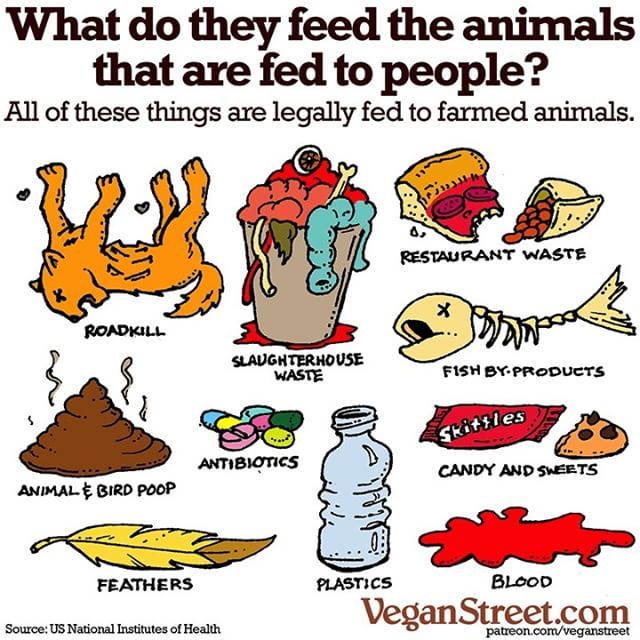 It also allows birds to keep an eye out for predators who may be hiding in the trees or shrubs. It also offers a secure refuge that is close enough for birds to flee to if they detect danger.
It also allows birds to keep an eye out for predators who may be hiding in the trees or shrubs. It also offers a secure refuge that is close enough for birds to flee to if they detect danger.
The flesh of every bird is comparable to chicken or a turkey, so eating just about any bird is deemed safe. However, whether these birds are feeding on clean food must be considered. The majority of sparrows are discovered trapped in rubbish, searching for nourishment.
Because sparrows aren’t particularly clean, you can’t go out and capture one off the streets or in your backyard since you don’t know where they’ve been and what they’ve eaten. They could even be infested with disease!
You may also collect and maintain a few of them in cages, which will allow you to watch what they eat and give them the appropriate nutrients. But eating sparrow meat is a lot of effort for little pleasure.
Amazon and the Amazon logo are trademarks of Amazon. com, Inc, or its affiliates.
com, Inc, or its affiliates.
What does a sparrow bird eat at different times of the year?
What does the sparrow eat and how does its taste preferences affect the population size?
- origin of name
- What do sparrows feed their chicks and what do they themselves eat in spring
- What do sparrows eat in summer
- Sparrow winter food
In spring, one can see how a caring parent drags worms and larvae into the nest, and in autumn the same sparrow family pecks at grains of grass, small fruits on trees.
Origin of the name
Vora Bey! "- shouted the peasants, angrily driving the sparrows from their crops. Still, a flock of sparrows can peck clean a hectare of a wheat field in a few days! It was from this cry that the name of the small winged neighbor of people came from.
And in China, in the middle of the 20th century, the irreparable almost happened - the sparrow population was completely destroyed in the light of the struggle for the harvest.
And famine set in the country: caterpillars and beetles destroyed all grain, because their enemies, sparrows, were no more! The Chinese had to buy sparrows from neighbors and breed them again.
What do sparrows feed their chicks and what do they eat in spring themselves
In early spring, when the snow has not yet melted everywhere, but sticky buds are already on the trees, the sparrow lays the first batch of eggs.
While hatching chicks, she waits until the male brings her any living creatures: she eats earthworms, the first caterpillars, flies; everything that crawls, jumps and flies from insects. Chicks also receive living food in their yellow mouths.
Parents feed babies only with insects, and do not refuse them themselves; it is in spring that the benefits of sparrows are most noticeable - a couple of birds eat up to 3 kg of garden pests per month!
Harvest destroyers!
Simultaneously sparrows raid trees, pecking buds; flowers of fruit trees and shrubs are also spoiled by them - sparrows can leave the owner of a currant or mountain ash without a crop.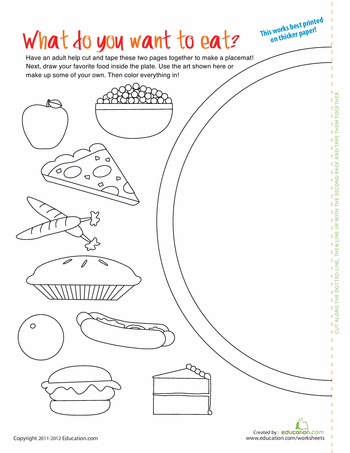
What sparrows eat in summer
Whoever feeds sparrow families in winter knows that feeders are almost always empty in summer. City sparrows that live in parks and squares systematically destroy insect pests in the summer.
At this time of the year they are always full and do not need to be fed - there are many beetles and caterpillars that devour the foliage, that is, there is more than enough food for the city sparrow.
Sometimes these birds visit landfills and places where there is a lot of food waste; for example, they pay visits to the backyards of restaurants and cafes where there are garbage containers.
The village sparrow, living next to a man in the countryside, also eats insects non-stop, but does not deprive the fields/meadows of its attention.
In the southern regions of Russia, the attitude towards village sparrows is still ambivalent: on the one hand, they protect the future harvest, and on the other hand, they peck this very harvest with a brutal appetite!
Feed.
Fields of young wheat and rye, sowings of oats and millet, berries in the garden - a feathered one can destroy all this in the literal sense of the word.
Everything that grows can fall under the sparrow raid - the bird spoils apples, swallows grapes that have not yet ripened. In agricultural areas in the summer there is a control over the number of sparrows, based on the proportion of harm and benefit: so that there are not too many of them, but so that they do not disappear at all.
Winter food for sparrows
In winter, not only the cold sets in - terrible hunger approaches the sparrows. The verse came out sad: caterpillars, midges hid, the ground is covered with snow, it is incredibly difficult to get autumn seeds.
Trees - bare, no fruit, no pests. The sparrow, like the siskin bird, due to the fact that it does not have subcutaneous fat, suffers severely from a lack of food in winter; in the cold, sparrows die en masse not from frost, but from hunger.
And then the man, who is in second place after the cat in the list of sparrow enemies, comes to the aid of the birds. Wheat and oats, sunflower and pumpkin seeds, bread, lard and pieces of meat - all the sparrow eats with gratitude.
In winter, city dumps are cleared of food waste, garbage bins next to houses are cleared of scraps by sparrows.
In the villages, sparrows escape from hunger by visiting cowsheds and looking for seeds of wild grasses in hay.
The ambivalent attitude towards sparrows is a difficult question, but one should always remember that this bird eats mostly insect pests. A person can protect crops even without the cruel extermination of sparrows, because there are many modern repellents.
SPARROW ᐈ Photo and description ✔
Sparrow is a bird that every person has met. This small bird has become an indispensable attribute of trees growing in the yard, a herald of approaching warm days, impending rainy weather. Where the feeders hang, the sonorous hubbub of sparrows is constantly heard, and with the approach of spring, their cheerful chirping is heard everywhere.
Where the feeders hang, the sonorous hubbub of sparrows is constantly heard, and with the approach of spring, their cheerful chirping is heard everywhere.
Bird sparrows have become the heroes of fairy tales, stories, sayings, nursery rhymes, proverbs and even folk signs. Let's take a closer look at the life of this small, but nimble and very famous bird.
Species origin and description
Photo: Sparrow
Sparrow is a widespread bird from the family of passerines of the same name.
It is said that the sparrow's thieving disposition gave this bird its name. It happened at the moment when the feathered one stole a bun from the baker, and he shouted after him: “Beat the thief!” This is how the sparrow got its name.
Ornithologists distinguish about 22 varieties of these birds, eight of them live nearby, the most common are the following types of sparrows:
- brownie;
- field;
- black-breasted;
- stone;
- red;
- snow;
- short-toed;
- Mongolian earthen.

The appearance of a sparrow is familiar to almost everyone since childhood. This is a small bird, but the beak is quite massive. The colors of the sparrow are dominated by gray, light brown and dark brown tones. Each passerine variety has its own distinctive features, some of which we will describe.
Video: Sparrow
The black-breasted sparrow has a chestnut head, neck, wings and occiput. In the area of the back, light mottled spots are observed. The sides and cheeks of the sparrow are painted in light colors. Goiter, throat, half of the breast are painted black. The wings are lined with a horizontal dark stripe. Males look much more elegant and brighter than females.
The snow sparrow (finch) is decorated with long black and white wings and a gray tail with lighter feathers along the edge. A black spot stands out noticeably in the region of the throat of this sparrow.
The stone sparrow is very large in comparison with its relatives, a distinctive feature of this bird is a wide light stripe running along the crown of the head, and its beak is light brown. The breast and throat are light with mottled, the goiter is decorated with a speck of bright lemon color.
The red sparrow has a rich chestnut color, the back of the head, back and wings of this shade. The female is distinguished by a light gray or brownish breast.
The short-toed sparrow is very small, the color of its feathers is sandy, narrow small stripes of a light tone can be seen on the throat and end of the tail.
The Mongolian Ground Sparrow has an inconspicuous gray coloration, it has lighter spots, but they stand out very weakly, so sometimes they are not visible at all.
Appearance and features
Photo: Sparrow bird
The appearance of a sparrow has been known to us since childhood. This is a small bird, in the color of which there are brown, brownish and gray tones. The wings of a sparrow are decorated with dark and light stripes that stand out with specks. The head, abdomen and area around the ears of a sparrow are either light gray or light brown.
The wings of a sparrow are decorated with dark and light stripes that stand out with specks. The head, abdomen and area around the ears of a sparrow are either light gray or light brown.
The dark massive beak clearly stands out on the small head of the bird. The sparrow's tail is not long, and the entire length of the sparrow's body can reach up to 15 cm, its body weight is about 35 grams. Sparrow's wings span up to 26 cm.
A female sparrow is easy to distinguish from a male not only in size (she is a little smaller), but also in color, which is much more elegant in the male. It has bright spots on the chin and chest, which are not observed in females.
The sparrow's eyes are outlined in greyish-brown. The legs of sparrows are short, thin and equipped with weak claws. Most often we see field and house sparrows. Differences between these species are not difficult to detect. The male house sparrow wears a dark gray hat, and the male field sparrow wears a chocolate one. On the wings of house sparrows there is one light strip, and on the wings of field sparrows there are two of them. The tree sparrow has black braces on its cheeks and a white collar around its neck. The size of the house sparrow is larger than its field counterpart.
On the wings of house sparrows there is one light strip, and on the wings of field sparrows there are two of them. The tree sparrow has black braces on its cheeks and a white collar around its neck. The size of the house sparrow is larger than its field counterpart.
The cervical sparrow has twice as many vertebrae as the long-necked giraffe.
Where does the sparrow live?
Photo: Moscow sparrows
it lives almost everywhere, although the sparrow does not like too frosty climate. Sparrow can be called a human companion, he gets along well, both in the countryside and in the conditions of huge megacities.
Sparrows settled in the tundra, and in the forest-tundra, and on the Australian mainland. The distribution range of sparrows is very extensive. It covers territories from the western part of Europe to the Sea of \u200b\u200bOkhotsk itself, the sparrow is found both in Central and East Asia, this feathered one has not bypassed Mother Siberia.
A specific distribution area can be indicated for each species:
- house sparrow - a native of Eurasia, found everywhere in our country, except for its northeastern part and tundra;
- snow sparrow inhabits the Caucasus and the southeast of the Altai Territory;
- field sparrow settled throughout Eurasia and North America;
- red sparrow in the Russian territory chose the Kuriles and the south of Sakhalin;
- Mongolian earth sparrow is found in Transbaikalia, in the Republic of Tuva and Altai;
- black-breasted sparrow lives in the north of the African continent and in Eurasia;
- stone sparrow registered in the Altai Territory, on the lower Volga, in Transbaikalia, in the Caucasus;
- short-toed sparrow inhabits Dagestan, because prefers rocky mountain ranges.
It would seem that sparrows live everywhere, they can be seen sitting on the roof, on a tree branch by the window, just flying by, fighting near the feeder, jumping on the asphalt, chirping in the garden, living in the field. We are so accustomed to these small birds that the sparrow for us is considered something (someone) ordinary and everyday.
We are so accustomed to these small birds that the sparrow for us is considered something (someone) ordinary and everyday.
What does a sparrow eat?
Photo: Sparrows in winter
A sparrow can be called an omnivore, this little bird is unpretentious in food. The sparrow menu consists of crumbs, various grains, insects, berries, fruits, leftovers from a human meal. You can't call a sparrow very shy. Many, probably, have seen how these nimble birds beg for food at railway stations, from passengers waiting for their transport.
People break off pieces of buns and pies for them, sparrows in a whole flock try to separate them, because they are not greedy at all. Sparrows, without shyness, guard the remnants of some food in summer cafes, and they can also steal a tidbit from the table. They treat new, unfamiliar food with caution, carefully examining it, and, often, they will not eat it at all.
Birds have a hard time in winter, a large number of them can be seen at the feeders. Moreover, often when a flock of sparrows appears, tits fly away, such is the robbery and lively character of sparrows.
Moreover, often when a flock of sparrows appears, tits fly away, such is the robbery and lively character of sparrows.
In winter, in severe frosts and heavy snowfalls, many sparrows die, because they have nowhere to find food, so people should take care of the birds by placing feeders with food.
Sparrows live just fine in the village in summer. The gardens are full of food for them. Sparrows are very fond of cherries, currants, grapes. Often gardeners and gardeners complain about them, due to the fact that they peck a lot of berries. On the other hand, sparrows destroy a lot of insect pests that damage the crop.
It should be noted that chasing sparrows from the garden with the help of a scarecrow is useless, the bird is not afraid of it at all. Here is a sparrow's varied menu, largely dependent on human preferences.
Features of character and lifestyle
Photo: House sparrow bird
Sparrows are impudent, arrogant, unceremonious and cocky. Where there are many of them, there is always noise, din, chirping, twittering. The character of the sparrows is fighting, a little cheeky. Often they displace other birds from some territory.
Where there are many of them, there is always noise, din, chirping, twittering. The character of the sparrows is fighting, a little cheeky. Often they displace other birds from some territory.
Sparrows live in flocks, because their grown offspring remain with their parents, then the flock grows every year. The sparrow life span is short, it is only about five years, specimens that live up to 10 are rare. Sparrow family unions are strong, created for a short life.
Sparrow is a sedentary bird, preferring to live in the same territory, because of which scandalous fights and violent showdowns with strangers often occur.
Sparrow's nest can be found anywhere:
- on the balcony;
- in the attic;
- behind the window cornice;
- in the birdhouse;
- in a small hollow;
- in an abandoned swallow's nest.
The tree sparrow often nests in nests with large birds (herons, eagles, storks, falcons). The cunning sparrow is thus under the protection of large birds, which watch their offspring, while also looking after the passerine.
The cunning sparrow is thus under the protection of large birds, which watch their offspring, while also looking after the passerine.
Silence and tranquility have never been heard of in the sparrow family; Each flock has a sentinel sparrow, which at its post vigilantly monitors the surrounding environment, warning relatives of the slightest threat with its sonorous chirping exclamation. Hearing him, the flock quickly disperses.
Sparrows are partly romantics, because they look at the world through rose-colored glasses, that's how their visual apparatus works.
Social structure and reproduction
Photo: A pair of sparrows
As already mentioned, the sparrow is a flocking bird, sedentary, living in a certain territory, which does not tolerate encroachment. Pairs of sparrows are very strong, birds create a family union until the end of their days. Pair formation usually begins in the very last days of winter or early spring.
Then the sparrow chirping and restless chirping are heard everywhere. Cavaliers, seducing ladies, often get into fights, so scandals during the marriage period are inevitable. The newly-made couple begins building a nest, which is already quite ready towards the end of March. The nest of a sparrow is small, coarse, twisted from straw, small branches, feathers and dried grass.
In April, the female starts laying eggs, usually no more than 8 eggs. They are white in color and dotted with reddish brown. Both parents incubate the eggs in turn, the whole process lasts approximately two weeks. Hatched chicks are born practically naked, their down is sparse, their large yellow mouth is immediately noticeable. Sparrows are very caring parents who feed their babies together, tirelessly bringing them all kinds of insects.
This feeding period lasts a little over two weeks. When the babies are only 10 days old, they are already starting to make their first flights. Towards the end of May or at the very beginning of summer, young sparrows begin to leave their parental nests.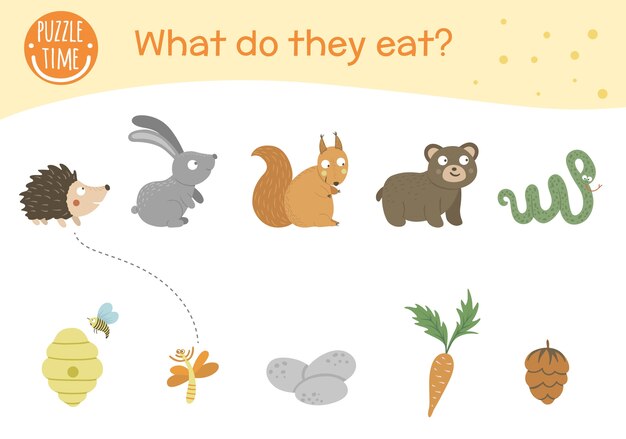 After leaving the nest, the young remain in the flock, subsequently forming their own families. Parents soon begin to create new masonry again, there may be several (about three) over the summer.
After leaving the nest, the young remain in the flock, subsequently forming their own families. Parents soon begin to create new masonry again, there may be several (about three) over the summer.
Surprisingly, in late autumn sparrows become animated again, loud chirping, and courting of females resumes. The birds are again starting to build nests, in which offspring are expected only next spring, and these cozy, pre-prepared structures will serve as a refuge from winter and autumn bad weather.
Natural enemies of sparrows
Photo: Sparrow in nature
Although sparrows have a cocky and courageous character, this little bird has a lot of enemies. Stray cats hunt sparrows with passion, and domestic cats are not averse to hunting these birds. A stray dog will also happily eat a sparrow if it is lucky enough to catch it. During the day, sparrows can suffer from swift raids of the sparrowhawk, which always attacks suddenly and with lightning speed, catching unprepared birds by surprise.
Often, even a sparrow on guard does not have time to wake up and warn its noisy compatriots. At night, sparrows become a snack for predatory owls, which, with their keen eyesight, can detect these little birds. Sometimes owls hoot loudly, which frighten off sparrows and force birds to leave their shelters, and then attack small frightened birds.
The cunning fox can also be a danger to sparrows, often ruining their small nests and eating chicks. The marten can also threaten the sparrows, because. excellent movement in the canopy of trees. Hedgehogs, squirrels and ferrets will never refuse to snack on sparrow eggs if they find a nest.
The difficult living conditions of sparrows also provoke the mass death of these birds. Often, newborn chicks fall out of the nests, which leads the babies to death. Many sparrows (especially young ones) do not survive until spring, because it can be very difficult for birds to survive harsh, frosty and snowy winters.
It is almost impossible to find food in such difficult conditions, the birds are waiting for help from humans, carefully monitoring the replenishment of feeders. In rural areas, it is easier for sparrows to overwinter, where they can find food in barns and sheds, where grain is often stored. This is how difficult the life of these little birds, whose enemies are more than enough.
In rural areas, it is easier for sparrows to overwinter, where they can find food in barns and sheds, where grain is often stored. This is how difficult the life of these little birds, whose enemies are more than enough.
Population and status of the species
Photo: Sparrow bird
The army of sparrows is huge and numerous, they have spread widely almost all over the globe. The population of sparrows does not experience any threats from the outside world, the disappearance of these small birds does not threaten at all, sparrows are nowhere under special protection.
The attitude of people towards sparrows is twofold. On the one hand, they are beneficial by eating a huge number of pests, on the other hand, countless hordes of sparrows can lead to the destruction of the entire crop. Many berries, fruits and grains can be eaten almost completely by sparrows. The situation is further complicated by the fact that the sparrow is not afraid of humans, so various garden and field scarecrows do not affect him.
Don't be negative about sparrows. One has only to recall the story that took place in China, when people began to exterminate birds because of their encroachment on rice fields. The Chinese found out that the sparrow could not fly continuously for more than 15 minutes, so they drove the poor birds to death, not allowing them to sit down.
The hordes of sparrows perished, but more insidious enemies came in their place - all kinds of insects, which began to feel at ease, because. the birds no longer threatened them. They destroyed all the crops, so that year a terrible famine broke out, from which more than 30,000 Chinese died. Apparently, then people realized their mistake, but its price was very terrible.
Today sparrows are not threatened by anything, their distribution area is extensive, and the population is very numerous. A sparrow is certainly not a rarity, we are so used to these birds living nearby that, sometimes, we don’t even pay much attention to them.
